One must select the appropriate size dehumidifier for their basement to protect their home from any damage from excess moisture in the air. If not taken care of, high humidity levels can result in mold growth, damage to the structures within the basement, and even cause an unpleasant odor. This guide intends to help you choose the right dehumidifier by considering the humidity problem’s severity, the basement’s size, and any other environmental conditions. After reading this article thoroughly, you will be familiar with the calculations for the types of dehumidifiers, their capacity ratings, and more so that you can provide your home with the needed care and protection.
What factors determine the size of the dehumidifier I need for my basement?
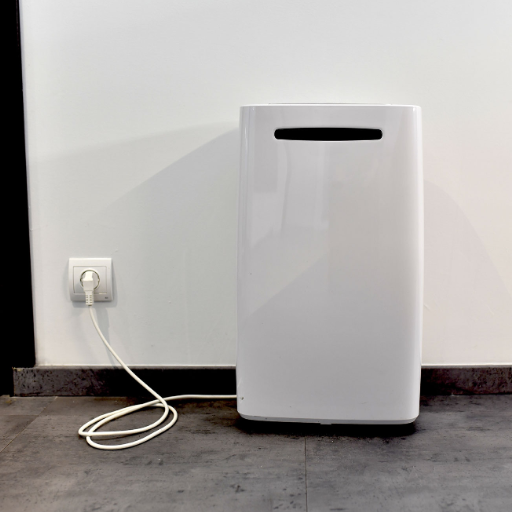
In low areas of your home, such as a basement, three considerations determine what dehumidifier size you require: relative humidity levels, spatial dimensions of the cellar, and overall environmental considerations. These dimensions define the density area that the dehumidifier needs to cover; as a rule of thumb, for larger areas, there is a need for capacity units measured in pints per day (PPD). Humidity determines the moisture level, rated from damp to extremely wet. These classifications end up determining the extent of dehumidifying required. Additionally, there are factors such as ceiling height, circulation of air, and the presence of leaks or flooding that, in totality, affect the unit’s capability of regulating the humidity levels. These factors, in conjunction, greatly assist in determining the correct dehumidifier size for optimizing moisture control.
How does square footage affect dehumidifier size?
The difficulty in determining the appropriate dehumidifier capacity is square footage, which, in essence, refers to the sheer size of the space that requires a thorough dehumidifying process. In most cases, larger areas will translate to larger remotes roughly in pints of moisture removal daily to control humidity. For example, a dehumidifier rated 20-30 pints is best suitable for a 500-square-foot space, while places whose area exceeds 2000 square feet might require equipment capable of removing even 50-70 pints or more. On another note, the humidity present also influences the capacity required. For example, too much humidity means using larger units for smaller areas. This information should be cross-referenced with the showroom-maintained standards to guarantee quality results.
What role does humidity level play in choosing a dehumidifier?
When buying a dehumidifier, the humidity level is always a key parameter to look into since it determines the unit size that will be required. According to the manufacturer’s standards, if the humidity level within a space is high, such a device must have a high pint-per-day removal rate. For instance, spaces that need to be classified as “very damp” or “wet” should have a high-capacity type dehumidifier, irrespective of the bulk volume of the space. This is, however, only applicable to ensure that the required humidity level is maintained and issues such as mold, mildew, or structural damage aren’t manifested within the space.
How does basement moisture level impact dehumidifier selection?
From a practical perspective, basement moisture levels directly determine the capacity and specifications of your desired dehumidifier. A smaller capacity unit might suffice for spaces with minimal dampness but for basements classified as “very damp” or even “wet,” a higher pint-per-day removal capacity is crucial. A minimum dehumidifier such as the lower one strains the unit in such situations. They may also lead to poor performance, which increases the probability of mold or mildew growth, making it all the more critical to understand the humidity level within the space. Thus, one can select the most suitable dehumidifier for the area, which protects the structure of the building as well as the quality of indoor air.
How do I calculate the correct size dehumidifier for my basement?
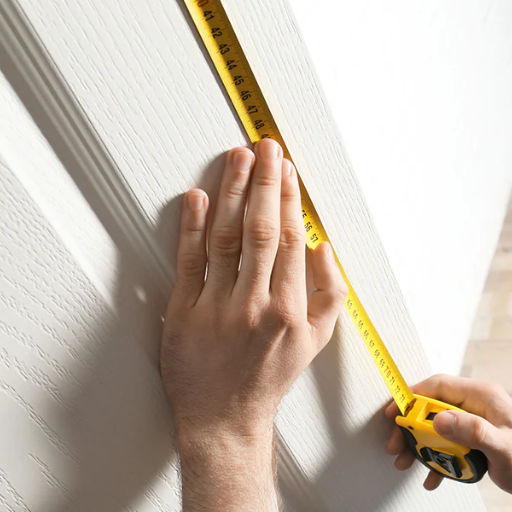
When looking for a dehumidifier for your basement, measure the room’s size and account for moisture levels in the area. Begin by determining the length and width of the basement, then use it to calculate the area in square feet. From those numbers, you can establish how much moisture is present. You can drip four levels of humidity: mildly damp, very damp, wet, and standing water. After confirming the humidity, you can cross-reference it with a dehumidifier capacity table, which depicts how much moisture removal capacity one would need according to the area. For instance, where a 30-pint capacity dehumidifier would be enough for a 1000-square-foot basement with moderate dampness, the same area and humidity would require a 50-pint dehumidifier. Picking the right location will ensure your humidity levels are in check and not hamper performance.
What is the dehumidifier sizing chart and how do I use it?
The dehumidifier sizing chart is a methodology that describes choosing the correct device based on the cubic feet and humidity or area dampness of the room. It serves as a clear guide for the area to be dehumidified and the number of pints such a dehumidifying device should be set to, depending on the time of day. To understand and utilize this chart, two factors need to be considered: the total square foot area and the sea dampness of the room. Sea dampness is categorized into four tiers: Slightly, Moderately, Really, and Wet.
To begin with, obtain the square footage of the area you will be working in. After that, focus on the amount of moisture in the air – moist air may make the room feel warm and damp, while wet air could make water settle. These parameters can then be aligned with the given chart’s parameters. To illustrate this, a moderately damp 500 square foot room might need a 20-30 pint dehumidifier, while an area similar in size but very heavily damp would require a 40-50 pint dehumidifier. With the help of these specified charts, the indoor quality of the air will be significantly improved, and energy efficiency will increase as well.
How many pints of moisture should my dehumidifier remove daily?
The number of pints of moisture my dehumidifier should remove daily depends on space and air quality. The commonly used range for a 500-square-foot area would be between 20 and 30 pints, but if that area were wet, then the dehumidifier would need to be able to remove 40 to 50 pints. A thorough evaluation of the surroundings is crucial to choose a specific model accurately and ensure its effectiveness.
Should I consider an additional 500 square feet when sizing my dehumidifier?
If there is an additional area of 500 square feet, one has to remember to add the total area of the place to be maintained along with the added area. Most modern-day dehumidifiers are rated on how much area they can cover under normal circumstances. If the area exceeds this by 500 square feet, you will require them of larger size. It has been noted that for every additional area of 500 square feet, the unit size needs to be boosted by 10 pints of capacity. So if your first room of 500 square feet needs a 30-pound unit, the next room, which is of size 1,000, will require over 40 liters. Additional humidity, temperature, and moisture presence factors can also be analyzed for accurate estimations.
What are the different types of basement dehumidifiers available?
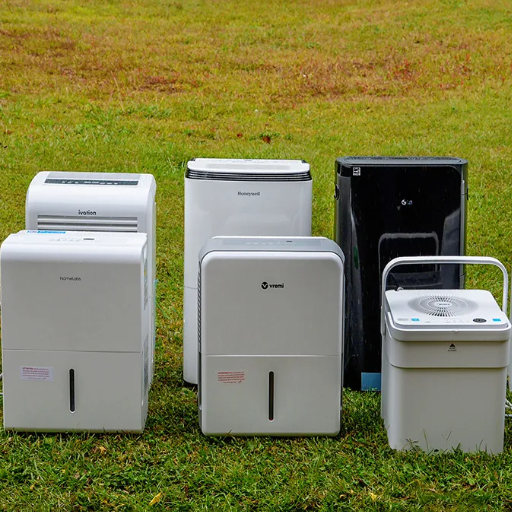
There are primarily three types of basement dehumidifiers available, each suited to different requirements:
- Desiccant Dehumidifiers: These units use a desiccant material to absorb moisture, making them ideal for low-temperature environments where frost may form on traditional refrigerant coils. They are highly effective in cold basements but may consume more energy.
- Refrigerant Dehumidifiers: These are the most common type, operating by condensing moisture from the air onto cooled coils. They are efficient for moderately humid basements and work best in temperatures above 41°F.
- Whole-House Dehumidifiers: Integrated into your HVAC system, these dehumidifiers are designed to manage humidity levels across the entire home, including the basement. They are ideal for larger spaces or homes requiring comprehensive humidity control.
Each type has a specific utility based on space requirements, temperature ranges, and energy efficiency.
What’s the difference between portable and whole-house dehumidifiers?
Portable and whole-house dehumidifiers differ in purpose and application—and this is their most notable difference. Portable dehumidifiers, unlike standard ones, are self-contained systems intended to dehumidify a single room or a much smaller area. They are easy to shift from one place to another, have easy configurations, and are cost-efficient. However, portable dehumidifiers cannot alleviate humidity in larger spaces and, as a result, require constant upkeep by emptying their water containers and cleaning their filters.
Moreover, whole-house dehumidifiers function differently – fully integrated into HVAC systems and effectively control humidity inside an entire house. Whole-house systems are more suitable in larger areas; they are plug-and-play systems and are easier to operate after the initial setup. Despite being more expensive, professionally fitted, and installed, these systems provide a much better solution for controlling humidity for a longer time without human interaction. The choice between the two depends entirely on the size of the area, which needs dehumidifying, how rich you are, and how lazy you are willing to be.
How do desiccant dehumidifiers compare to other types?
The difference between a desiccant dehumidifier and other dehumidifiers, such as refrigerant dehumidifiers, lies in how it functions and the range of conditions it works best with. In contrast to desiccant models, which absorb moisture directly from the air using a hygroscopic substance, refrigerated models use cooling coils to condense humidity. This explains why the former works excellent in low temperatures, as refrigerated models are ineffective in such conditions, though they use more energy. They are only practical for industrial use or spaces that require low-humid areas. Otherwise, they are relatively Energy inefficient. However, the ultimate choice depends on the need.
Are there specific dehumidifiers designed for basements?
Most basements tend to be relatively moist due to poor ventilation. Therefore, basement dehumidifiers are attended for moisture problem design, specifically designed to resolve the abovementioned issues. They are rated at higher capacities as they operate in subterranean areas with significant moisture. Basement dehumidifiers must work at low temperatures, requiring well-built compressors to lessen the chances of freezing coils. Some models come with pumps and continuous drainage to ease and quicken water removal; this is especially helpful in the sub-drain range that is located in managing the basal drain range. Finally, if the need is to cut down on energy wastage while continuously keeping the room optimally humid, one may consider an Energy Star-certified device.
How does basement size affect dehumidifier choice?
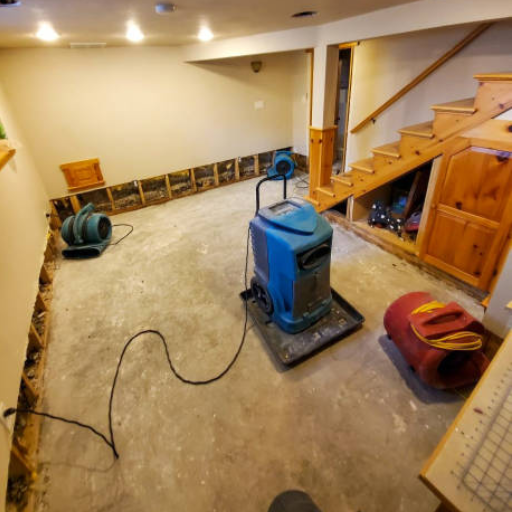
While searching for a suitable dehumidifier, the basement size is one consideration. Most dehumidifiers are rated based on the number of pints they can remove from the air daily. Larger basements would, therefore, require a higher capacity to combat the moisture levels efficiently. If your basement is less than 1500 square feet, then a capacity of 20-30 pints should work; otherwise, a 50 or higher capacity would be more suitable for anything more significant than that. Additionally, a unit with better airflow or multiple combined units would be ideal if your basement has multiple partitions and a high ceiling.
What size dehumidifier do I need for a 500-square-foot basement?
I would recommend a 30-40 pint dehumidifier for basements with a higher moisture level, whereas a 20-30 pint model should suffice for a lesser moisture level. While all of these are good choices, a high-temperature wet basement with walls and flooring that is regularly damp would require a 30-40-pint dehumidifier. For excessive and extreme conditions such as damp flooring, standing water, or condensation, a 50-pint model would be more beneficial; however, remember that the layout and ceiling height will also determine which model is most suitable.
How do I choose a dehumidifier for a large basement?
In picking a dehumidifier for a basement, the most crucial factors for me include humidity and the size of the room in terms of SQ FT. For basements larger than 1500 SQ FT, I always go for a high-capacity unit, usually a 50-pint or higher model, especially if the basement humidity levels are high or moisture is visible. The features that I consider essential for ease and effectiveness include a built-in pump providing continuous drainage and a hygrometer to self-regulate the humidity levels. Other factors, such as ceiling height and open floor plans, are critical because I often use a more powerful unit to achieve consistent results.
What are the consequences of choosing the wrong size dehumidifier?

Choosing the appropriate size when picking out a dehumidifier or vice versa is imperative, as this may result in excessive moisture and structural damage over time. Removing or tackling moisture issues won’t suffice if the dehumidifier is too tiny. Suppose this unit is more significant than necessary. In that case, it will be cut off more often than required, resulting in uneven humidity imbalance and throwing the device into disarray within the room. All of this degrades the air quality within.
What happens if my dehumidifier is too small for the space?
A device is needed to keep humidity stable in a household. Still, if that device is underpowered, humidity levels will exceed acceptable, leading to mold developing in walls. Molds are hazardous to one’s health and cause corrosion/breakdown of the house. The dehumidifier unit works overtime, meaning more energy consumption and wear will be needed on the device. Due to all these issues, the device must be correct for the room and its humidity for maximum efficiency.
Can an oversized dehumidifier cause problems?
Having an oversized dehumidifier brings its challenges. Despite appearing more efficient, such a device tends to overdry an area too quickly, which results in frequent cycling. In other words, this entails that the device operates and stops functioning regularly, which uses more power and, in turn, negatively affects the dehumidifier’s overall longevity. Likewise, excessive over-drying can restrict the device from boosting the air filtering process and balanced humidity control, thus making the space extremely dry and uncomfortable. Hence, the device must be of a specific size, not hindering comfort and efficiency.
How do I maintain the proper humidity level in my basement?
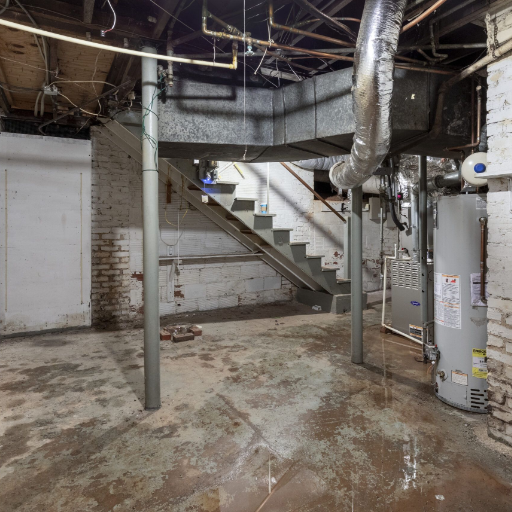
To keep your basement humidity in check, set the dehumidifier’s relative humidity to no less than 30% and up to 50 percent. Keep in mind that the dehumidifier you use should be of an ideal size to avoid the downside of oversized units or to get correctly functioning dehumidifiers. Regularly do essential maintenance by cleaning the filters and clearing the water tank to enhance the device’s working. Furthermore, consider sealing up cracks or openings between walls and the floors to limit the unnecessary moisture that can enter the space. Use a hygrometer to keep track of humidity levels in the air.
What is the ideal relative humidity for a basement?
The humidity should typically be set at 30% to 50% for people who want to keep their basements in satisfactory condition. Such measures must be implemented because mold and dust mites would infest the basement and cause serious structural issues. However, if the humidity is set lower than 30%, the condition becomes so dry that it causes the skin to dry out and the wood to warp. Therefore, maintaining a balance is essential; humidity should be checked regularly with a hygrometer, while dehumidifiers can remove excess moisture.
How often should I run my basement dehumidifier?
I use my basement dehumidifier to maintain the optimal relative humidity between 30% and 50%. This over-humidified basement occasionally requires the dehumidifier to be turned on continuously or daily—mainly during summer. Nevertheless, I check my hygrometer regularly and change the settings according to seasonal climate changes or when a moisture problem arises.
Are there any special considerations for dehumidifiers in crawl spaces?
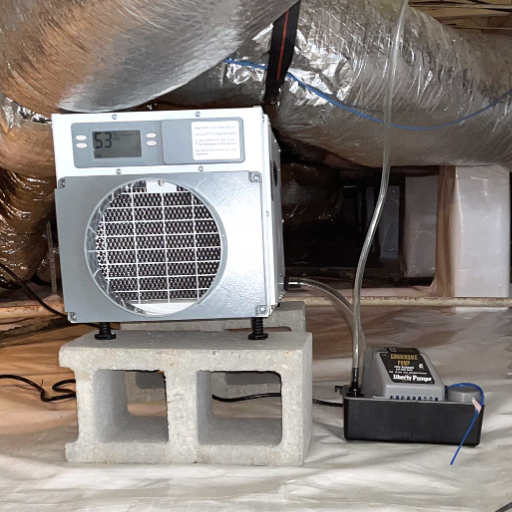
Located beneath the house, crawls are horizontally restricted or low to the ground. In this regard, when utilizing a dehumidifier for a crawl space, it is imperative to take extra precautions in determining which dehumidifier to select for good drainage from the area. This is because dehumidifiers designed for use in low-temperature conditions and cramped spaces contain additional components that make them more suitable. Furthermore, it is vital to ensure that one keeps the area sealed fully to avoid moisture ingress and guarantee that the dehumidifier provides adequate drainage for the required purposes. Additionally, regular upkeep is necessary to sustain efficiency by mopping the filters while inspecting for clogs. Always remember using a hygrometer is critical, as the humidity range must be between 30% and 50%.
How does crawl space dehumidification differ from basement dehumidification?
Contrary to basements, crawl spaces have different building characteristics and tend to be smaller and far less accessible, meaning they lack air conditioning, making them more susceptible to outside elements. So, in this regard, if one plans on constructing a crawl space, he must consider shifting to compact dehumidifiers that are built for low temperatures as they would lower the chances of moisture penetrating the ground and building up in the crochet.
In contrast, basements are usually easier to design and can have somewhat high ceilings. Moreover, they are only partially conditioned. Basement dehumidifier units have to be of higher capacity since they are used in larger areas, but they may also need sophisticated filtration technology for airborne particulates. Moreover, air filtration is of concern in these cases since this might also require tighter sealing of vents, doors, and other penetrations to avoid moisture entering from outside. These factors must always be considered when deciding between a sump pump or wall treatments for water intrusion. Water removal technologies are elementary to incorporate in crawl spaces with at least a partial foundation setting. Both techniques require humidity control, but in many case,s crawl spaces are more limiting and may need different types of equipment and installations.
What size dehumidifier works best for a crawl space?
Basic standards help determine the size capacity needed for a dehumidifier in crawl spaces. In addition to the square footage, the humidity will also determine the overall size required capacity for the dehumidifiers. For typical units under 1,000 square feet with moderate humidity levels, 30-pint capacity units are often used. For bigger spaces or higher humidity areas, a 50 to 70-pint dehumidifier is recommended.
References
Frequently Asked Questions (FAQ)
Q: How do I determine what size dehumidifier I need for my basement?
A: To determine the right dehumidifier size for your basement, consider the square footage of the space and its humidity level. For every 500 square feet of moderately damp space, you’ll need about 10 pints of capacity. For damp spaces, increase the capacity. Measure your basement’s area and assess its moisture level to choose the appropriate size dehumidifier you need.
Q: Why do I need a dehumidifier for my basement?
A: You need a dehumidifier for your basement to control excess humidity, which can lead to mold growth, musty odors, and potential structural damage. A dehumidifier removes moisture from the air, creating a healthier and more comfortable environment in your home’s lower level.
Q: What type of dehumidifier is best for a basement?
A: The best dehumidifier for a basement is typically a portable dehumidifier with sufficient capacity for your space. Look for models designed for basements, which often have features like continuous drainage options and low-temperature operation. The right dehumidifier will depend on your specific basement conditions and size.
Q: How does room size affect the choice of dehumidifier?
A: Room size is crucial in choosing the right dehumidifier. Larger spaces require dehumidifiers with higher capacity. For example, a 30-pint dehumidifier may be suitable for a small basement, while a large-capacity dehumidifier (50-70 pints) would be necessary for spacious basements. Always consider the size of your space when selecting a dehumidifier.
Q: How do I choose the right dehumidifier capacity for high-humidity basements?
A: For high-humidity basements, choose a dehumidifier with a higher capacity than typically recommended for your space size. If your basement is damp, select a dehumidifier that can remove at least 12-15 pints of moisture daily for every 500 square feet. This ensures the unit can effectively combat the excess humidity in your basement.
Q: What factors should I consider when determining the dehumidifier size for my basement?
A: When determining the size of your basement dehumidifier, consider the following factors: square footage, humidity level, temperature, air circulation, water sources (like laundry or a sump pump), and the number of occupants. These elements will help you find the right dehumidifier to manage your basement’s moisture levels efficiently.
Q: Can I use a small dehumidifier in a large basement?
A: While you can use a small dehumidifier in a large basement, it’s not recommended. A small dehumidifier must work harder and may not effectively control humidity in a larger space. Choosing a dehumidifier size that matches your basement’s dimensions is best to ensure optimal performance and energy efficiency.
Q: How do I know if I need a dehumidifier for my basement?
A: Signs that your basement needs a dehumidifier include musty odors, visible mold or mildew, condensation on windows or pipes, damp spots on walls or floors, and a general feeling of dampness. If you notice any of these issues or if your hygrometer shows humidity levels consistently above 50-60%, it’s time to consider purchasing a dehumidifier.
Q: What size dehumidifier do I need for a 1000-square-foot basement?
A: For a 1000-square-foot basement with average humidity, you’ll typically need a 30-50-pint dehumidifier. However, if your basement is damp, you may need a larger capacity unit, such as a 60-70-pint dehumidifier. Continually assess your basement’s conditions to determine the most appropriate size for your space.
Q: How often should I run a dehumidifier in my basement?
A: The frequency of running your dehumidifier depends on your basement’s humidity levels and the time of year. Generally, running your dehumidifier continuously is best until it reaches the desired humidity level (usually between 30-50%). After that, you can operate it as needed to maintain that level. During humid seasons, you may need to run it more frequently to keep moisture levels in check.



